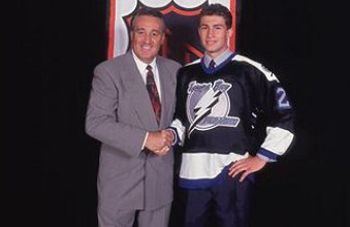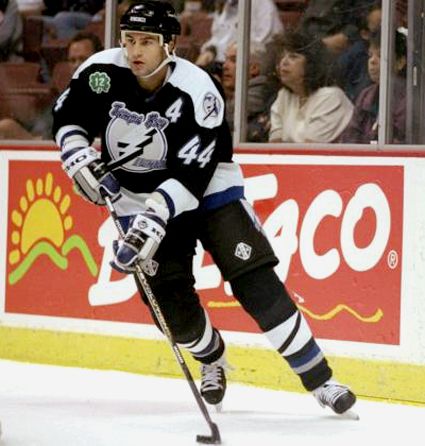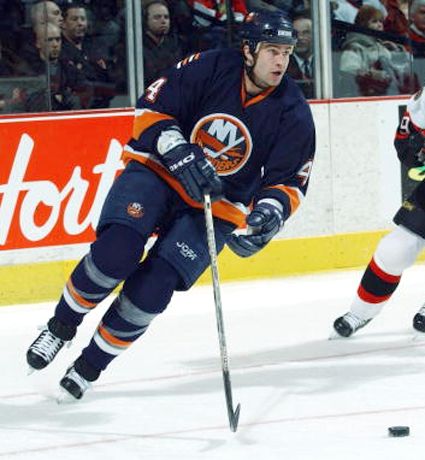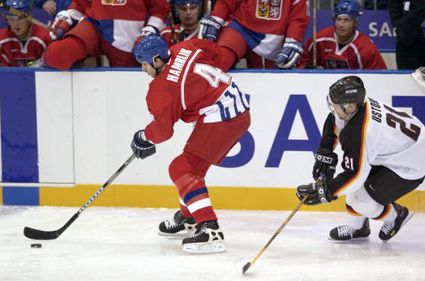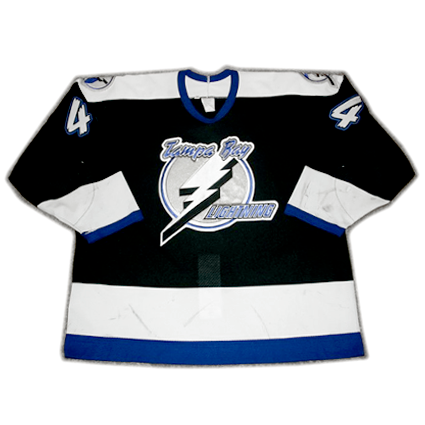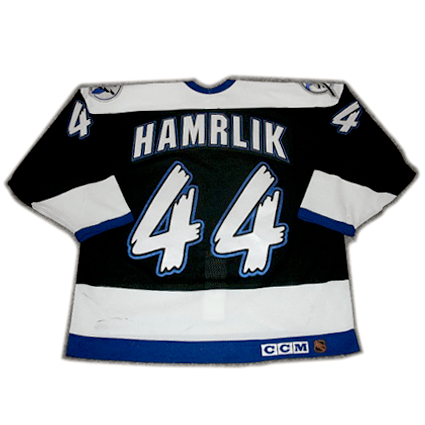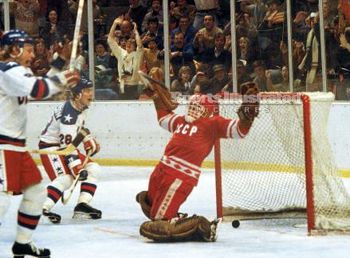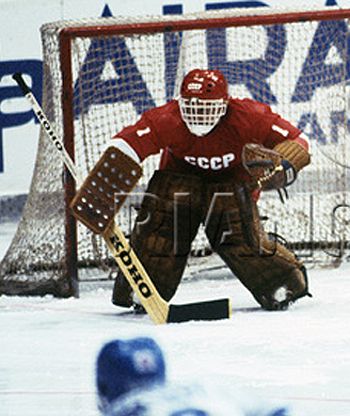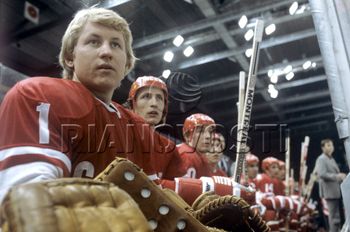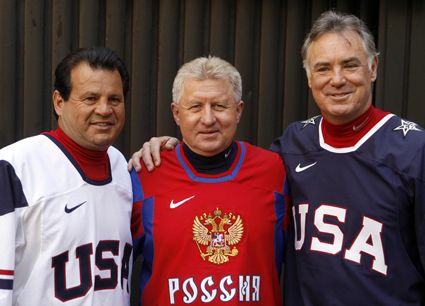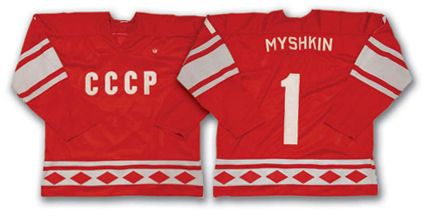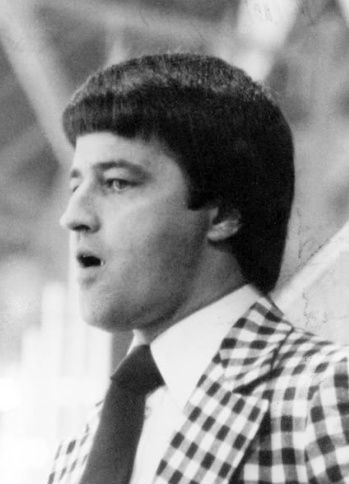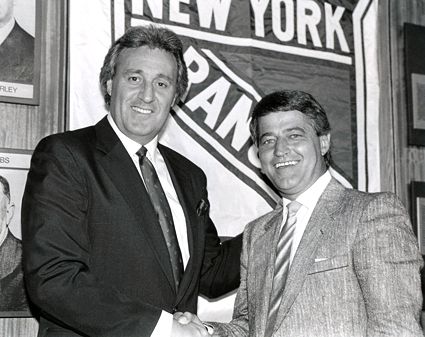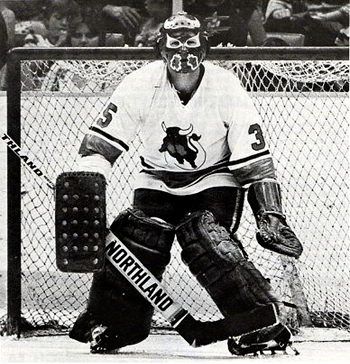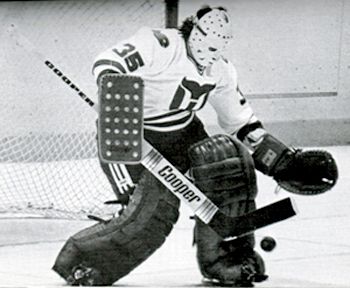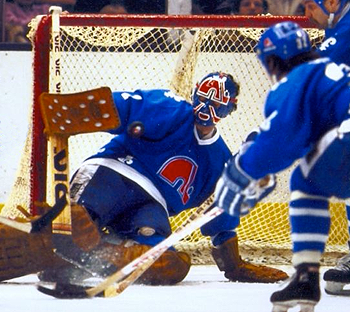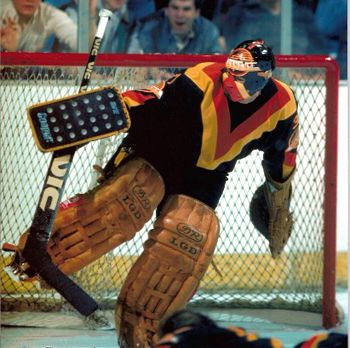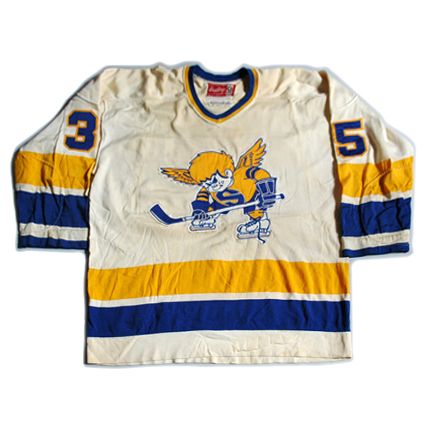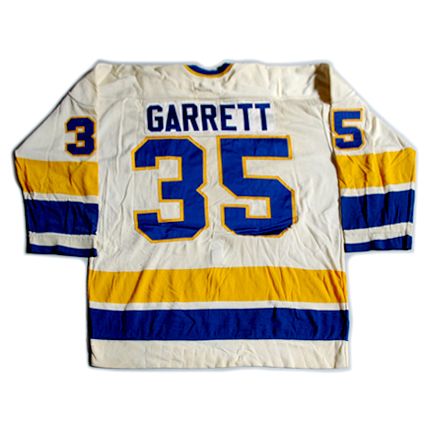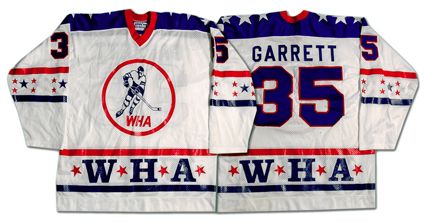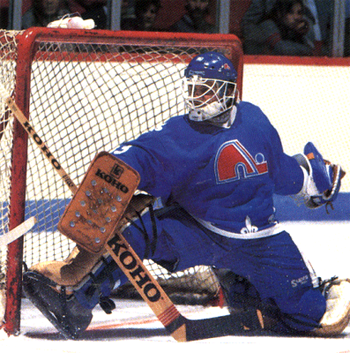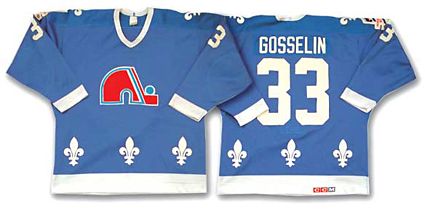So why is the #1 pick given a jersey with the #2?
Friday, June 20, 2014
1995-96 Tampa Bay Lightning Roman Hamrlik Jersey
The 1992 NHL Entry Draft was held on this date in Montreal and the Tampa Bay Lightning selected defenseman Roman Hamrlik of Czechoslovakia with the first overall pick, the first Czech ever drafted #1 overall.
Hamrlik with Phil Esposito after being drafted #1 overall in 1992.
So why is the #1 pick given a jersey with the #2?
So why is the #1 pick given a jersey with the #2?
The Ottawa Senators followed with center Alexei Yashin at #2, Mike Rathje went third to the San Jose Sharks, left wing Todd Warriner fourth to the Quebec Nordiques and the New York Islanders rounded out the top five with the rugged Darius Kasparitis, making three defensemen among the top five.
Other notable selections in the first round were Cory Stillman at #6 to the Calgary Flames, Sergei Gonchar went 14th to the Washington Capitals and long-time NHLers Martin Straka 19th to the Pittsburgh Penguins and Grant Marshall 23rd to the Toronto Maple Leafs.
Later round successes were Michael Peca at #40 to Vancouver, Darren McCarty #46 to Detroit, #65 Kirk Maltby to Edmonton, #88 Jere Lehtinen to the Minnesota North Stars, Adrian Aucoin #117 to Vancouver, the indestructible Ian Laperriere to St. Louis at #158, Stephane Yelle at #186 in round 8 to New Jersey and future NHL All-Stars Nikolai Khabibulin #204 in Round 9 to Winnipeg and in Round 10, Anson Carter, #220, to Quebec.
The latest pick to see NHL action was Andrei Vasilyev (#248) who played 16 games over four seasons with the Islanders (15) and the Phoenix Coyotes (1).
Hiroyuki Miura became the first Japanese player drafted at #260 in the 11th and final round, if you don't count the fictitious Taro Tsujimoto taken in 1974 by Punch Imlach of the Buffalo Sabres! Miura played six games with the Wheeling Thunderbirds of the ECHL in 1993-94, but never came close to playing in the NHL.
Hamrlik made his NHL debut later in 1992 with the Lightning and played in 67 games and scored 21 points. He maintained his scoring pace the next season, but raised his toughness level, nearly doubling his penalty minutes from 71 to 135. Three more seasons in Tampa followed, including a career high 16 goals and 65 points in 1995-96, until Hamrlik was traded to the Edmonton Oilers halfway through the 1997-98 season as part of a five player trade.
Two and a half seasons in Edmonton were followed by a trade to the New York Islanders, where he played for four full seasons. He spent the lockout season of 2004-05 like many other European NHLers by returning to the final club he played for prior to moving to North America, in Hamrlik's case, ZPS in Ziln of the Czech Republic.
With the lockout concluded, Hamrlik signed with the Calgary Flames as a free agent for two seasons prior to choosing the Montreal Canadiens as his next home beginning in 2007-08. He would play four seasons in Montreal before a move to the Washington Capitals for all of 2011-12. Once the lockout ended, he saw action in f4 games with the Capitals before being claimed by the New York Rangers in March, where he finished out his career with a final 12 games.
Hamrlik scoring against his old team, the Islanders, while with Montreal
A major reason for Hamrlik's lengthy NHL career was his remarkable consistency. From 1994 through 2011, Hamrlik has scored between 21 and 46 points, save for the one season he hit 65. He has also missed a minimum of games, a stretch of 14 of 15 NHL seasons playing 70 games or more from 1995-96 to 2011-12, a streak ended when he played "only" 68 games.
Internationally, his opportunities were somewhat limited by his regular appearances in the NHL playoffs, but Hamrlik as competed for the Czech Republic in the 1994 World Championships, the 1996 World Cup, the 1998 Olympics where he won a gold medal, the 2002 Olympics, the 2004 World Championship and the 2004 World Cup. Prior to his North American career, he played for Czechoslovakia in the 1991 and 1992 European U18 World Championships, winning gold twice and the 1992 World Juniors.
Thanks to his longevity, he finished his career with 1,395 games played, 638 points from 155 goals and 483 assists.
Today's featured jersey is a 1995-96 Tampa Bay Lightning Roman Hamrlik jersey as worn during his highest scoring season when he scored a career high 16 goals and 65 points. He also made his first appearance in the NHL playoffs that season.
This style Lightning jersey was originally worn in their debut season of 1992-93 with a silver numbers and a blue drop shadow and a unique font for the names on the back. The following season the fonts were italicized, making for the best looking Lightning jerseys in their history.
For some reason, the club changed to radially arched letters and the now white paintbrush font numbers, which have little to do with the name "Lighting", after only just one season. This style remained in use through the 1999-2000 until they changed to a much more boring block style font and one color names with no arching or any other feature to make them unique, as all other Lightning fonts had been throughout their history up until this point. It's a change we've never understood, considering their past history of unusual choices.
Today's video section begins with Hamrlik being selected first by the legendary Phil Esposito.
Next, Hamrlik converts the world's best saucer pass by Tomas Plekanec after Plekanec skates the length of the ice through the entire Islanders team to win the game in overtime.
Finally, highlights of Hamrlik's time with both Calgary and Montreal, set to the typical YouTube soundtrack. No penalty points for turning your speakers off.
Labels:
Hamrlik Roman,
Tampa Bay Lightning
Thursday, June 19, 2014
1981 Soviet Union National Team Vladimir Myshkin Jersey
Born on this date in 1955, Vladimir Myshkin is best remembered for being the goaltender who gave up Mike Eruzione's game winning goal in the 1980 Olympic "Miracle on Ice" game versus the United States, but there was certainly more to the man that just that single goal against.
Myshkin reacts to Eruzione's goal in 1980
He began his career with Krylia Sovetov (Soviet Wings), the club sponsored by the Soviet Air Force, where he played in both the 1977-78 and 1978-79 seasons. Following the 1979 season, he made his World Championship debut with the Soviet Union in 1979, playing in two games on the gold medal winning team.
For the 1979-80 season, Myshkin would move to the KGB's Dynamo Moscow club, where he would remain for the next 11 seasons as their undisputed number one, averaging nearly 40 games a season in a league with a schedule of between 40 and 50 games a year.
Myshkin in goal for Dynamo
Unfortunately for Myshkin, his career at Dynamo coincided with the rival Red Army (also known as CSKA Moscow) club's most dominant period in their history, reeling off 13 consecutive Soviet League titles from 1977 to 1989. Finally, in Myshkin's final season with the club, payoff arrived as Dynamo Moscow was finally able to wrest the title away from Red Army in 1990.
Following the long sought after Soviet League championship, Myshkin would play one final professional season with Lukko Rauma in Finland's SM-Liiga as their number one goalie.
Internationally, Myshkin was a regular member of the Soviet National Team, but like his timing playing for Dynamo during the era of Red Army, Myshkin's career as a goaltender unfortunately coincided with that of the legendary Vladislav Tretiak, recognized world-wide as one of, if not the, top goaltender in the world. The result for Myshkin was a trophy case full of medals and little playing time.
He was a member of the gold medal winning World Championship team in 1979 (2 games played), 1981 (1), 1982 (3) and 1983 (3). Finally after the retirement of Tretiak in 1984, Myshkin was given the reins in 1985 and played in ten games only to see the Soviet Union knocked off their perch and finish third after losing to both Czechoslovakia and Canada in the Final Round.
And with that, Myshkin once more returned to his familiar role as backup on the National Team, as in the 1989, 1990 and 1991 World Championships, he would play but one game in each tournament, yet come home with gold medals in both 1989 and 1990.
The story was very much the same in the 1981 Canada Cup with one start in seven games but another gold medal to bring home in his luggage.
Myshkin at the 1982 Izvestia Cup
Thing would change in the 1984 edition of the Canada Cup with Tretiak now out of the picture following his retirement after winning a gold medal at the 1984 Olympics, where Myshkin saw action in but a single game once more.
Despite Myshkin's failure to secure the nearly customary gold medal in the 1984 World Championships, he was back in goal at the 1984 Canada Cup. While Myshkin would defeat Czechoslovakia, Sweden and the United States in round robin play, he would once again fall short with the weight of the world on his shoulders as Canada would take the Soviets to overtime in their semifinal match, the first overtime game in Soviet National Team history, only to have Mike Bossy deflect a puck past Myshkin, who was without his stick after Bossy had collided with him several seconds earlier, to eliminate the Soviets from the competition but Myshkin was named the goaltender on the tournament All-Star Team.
Perhaps the highlight of Myshkin's international career was his 6-0 shutout of the NHL All-Stars at the 1979 Challenge Cup, after the Soviets, with Tretiak in goal, had split Games 1 and 2.
All told, Myshkin would collect six World Championship gold medals, a gold in the Canada Cup and an Olympic gold medal, eight golds in all, and play in a total of just 13 games, perhaps the greatest return on investment in the history of hockey!
Myshkin in his all too familiar spot on the end of the national team bench
Following his playing career, Myshkin would coach the Swiss club HC Davos from 1994 to 1999 and later become the goaltending coach of Dynamo and CSKA Moscow before coaching Vityaz Chekov in Russia.
1980 Olympians Mike Eruzione, Vladimir Myshkin and Jim Craig at a promotional appearance in advance of the 2010 Olympics
Today's featured jersey is a 1981 Soviet National Team Vladimir Myshkin jersey as used in the 1981 Canada Cup tournament.
This style of Soviet jersey with the diamond shapes around the waist was used from 1977 until 1983, which included the memorable 1980 Olympics.
photo courtesy of Classic Auctions
Our first video today is the game winning goal from the "Miracle on Ice" when Mike Eruzione of the United States gets one past Myshkin in the Soviet goal in place of Tretiak in the third period of their game for the ages.
Here is Canada defeating the Soviet Union in overtime of the 1984 Canada Cup semifinals.
We conclude today with Myshkin's finest game, the third game of the 1979 Challenge Cup, when Myshkin and the Soviets shut out the NHL All-Stars 6-0.
Labels:
Myshkin Vladimir,
Soviet Union
Wednesday, June 18, 2014
The Coach Who Got Traded
In a most unique transaction on this day back in 1987, the New York Rangers traded their 1988 first round draft pick to the Quebec Nordiques in exchange for the Nordiques' coach Michel Bergeron.
Phil Esposito, the Rangers General Manager at the time, and you just knew during an odd story that somehow Esposito's name would come up at some point, asked the Nordiques about Bergeron almost as a joke during the draft that year and was surprised when the Nordiques GM Maurice Filion said "Let's talk."
Esposito liked Bergeron's combative style, feeling that "motivation and emotion" was what he wanted for the Rangers. Esposito had to take over behind the Rangers bench when Tom Webster was forced to relinquish the job due to an inner-ear problem and brought a fiery style to the bench and he was looking for someone with similar qualities - qualities he found in Bergeron.
Since relations between Bergeron and Filion had become strained, the Nordiques had given Esposito permission to talk to Bergeron, who still had two years remaining on his contract. They spoke for the first time on that Monday and by Wednesday had agreed to a contract and in return, the Rangers sent Quebec it's 1988 first round draft pick and $75,000 cash.
And how did it turn out for Bergeron in New York? He missed the playoffs in his first season with a 36-34-10 record and was fired by Esposito with just two games remaining in his second season with the team at 37-33-8 and replaced by... Esposito himself, who proceeded to lose the last two games of the regular season and then got swept out of the playoffs in four straight by the Pittsburgh Penguins.
Oddly enough, Bergeron would return to coach the Nordiques once more the following season of 1989-90, his last in the NHL. He would finish with a dismal 12-61-7 record.
And what became of the draft pick obtained by the Nordiques for Bergeron? With their second pick in the first round, and the 5th overall, the Nordiques selected Daniel Dore from the Drummondville Voltigeurs of the Quebec Major Junior Hockey League. He totaled 17 NHL games played, 2 goals and 3 assists for 5 career points. To select Dore, the Nordiques passed on Martin Gelinas (1273 GP, 660 pts), Jeremy Roenick (1363 GP, 1216 pts) Rod Brind'Amour (1484 GP, 1184 pts) and Teemu Selanne (1451 GP, 1457 pts), who were picks 7, 8, 9 and 10 that year.
Slam! Sports picked Dore as #8 in their list of Top 10 draft-day busts.
Unfortunately we don't own Bergeron's snazzy plaid sport coat, so no jersey today...
Tuesday, June 17, 2014
1973-74 Minnesota Fighting Saints John Garrett Jersey
Perhaps no other players personifies life in the World Hockey Association better than John Garrett. Born on this date and drafted by the St. Louis Blues in the 1971 NHL Entry Draft, Garrett, faced with the prospect of life in the minor leagues riding buses and playing in a dingy old rink for little pay while trying to crack an NHL lineup instead cast his lot with the Minnesota Fighting Saints of the WHA for a higher salary, playing time in a top professional league in a state-of-the-art, brand new arena, featuring cutting edge clear dasherboards! It was a no-brainer for many minor league players in the early 1970's to make the jump to the WHA.
In Minnesota, Garrett split time with former US Olympian Mike Curran, before becoming the number one goalie in 1974-75 with 58 appearances and a 30-23-2 record. The following season Garrett had already played in 52 of the Fighting Saints 59 games, going 26-22-4, when the franchise folded mid-season.
Minnesota Fighting Saint John Garrett - note the clear dasherboards behind him
Garrett's services were then snapped up by the Toronto Toros where their unsettled goaltending situation saw six different men play at least seven games, with none more than 26. While Garrett remained with the franchise for the next two seasons, nothing in the WHA was that simple, as the franchise relocated for the 1976-77 season to the deep south of the United States, finding a new home in Birmingham, Alabama.
Garrett's veteran experience and strong play immediately earned him the starting job and he patrolled the crease for 65 games that season and he was named a First Team WHA All-Star. He also played in 58 games in the 1977-78 season when the "Baby Bulls" were stocked with several players under the age of 20, something never before tried in major professional hockey.
A trade in September saw him dealt to the New England Whalers where he split the goaltending duties with Al Smith for the final season of the WHA. For 1979-80, the Whalers, now renamed the Hartford Whalers, joined the NHL.
During his time in the WHA, Garrett saw and lived through it all. A franchise folding mid-season, a franchise relocation, a trade and eventually a change in leagues!
Garrett led the Whalers in appearances in 1979-80 and 1980-81 with 52 and 54, respectively. With the Whalers failing to qualify for the playoffs in 1981, Garrett was chosen to be a member of Team Canada at the World Championships.
He began the 1981-82 season with Hartford prior to being traded to another WHA refugee club, the Quebec Nordiques in January of 1982 to back up Dan Bouchard.
With Bouchard again getting the majority of the playing time in 1982-83, and the Nordiques wanting to make room for future starter Clint Malarchuk, Garrett was again dealt in February 1983 to the Vancouver Canucks. While he was unable to displace established starter Richard Brodeur, Garrett did play three seasons in Vancouver to close out his NHL career.
Garrett's career concluded with 530 games played, 216 wins, 242 losses and 52 ties between the two leagues combined.
John Garrett's goalie mask history
Today's featured jersey is a 1973-74 Minnesota Fighting Saints John Garrett jersey. The Fighting Saints original jerseys featured the "S" logo and were worn for the first half of their first season before being replaced by the "little saint" logo. None of the original Fighting Saints jerseys survived, as they had their crests removed and were given to Hasting High School to reuse.
Fighting Saints jerseys are some of the most sought after of the WHA game worn jerseys, thanks in part to their classic look, fantastic logo, die-hard fan base and limited availability.
Bonus Jersey: Our bonus jersey is a 1977 WHA All-Star John Garrett jersey as worn in the game in Hartford, Connecticut, won by the East All-Stars 4-2.
Our video section kicks off with a can't miss clip as Fighting Saints coach Harry Neale interviews John Garrett on his arrival with the Fighting Saints. Dig the bow tie and suit!
Finally, a look at the Minnesota Fighting Saints 1974-75 season is this classic old film. While you are getting your groove on to the mid-70's soundtrack be sure to note the clear dasherboards used at the old St. Paul Civic Center, home of the Fighting Saints.
Labels:
Garrett John,
Minnesota Fighting Saints
Monday, June 16, 2014
1986-87 Quebec Nordiques Mario Gosselin Jersey
Mario Gosselin, born on this date in 1963, played junior hockey for the Shawnigan Cataractes of the QMJHL from 1980-81 to 1982-83, including going 32-9-1 in his final season.
He was drafted 55th overall by the Quebec Nordiques in the 1982 NHL Entry Draft but spent the 1983-84 season playing with the Canadian National Team program prior to playing in the 1984 Olympics for Canada in Sarajevo, Yugoslavia. On his return from Europe, he made a memorable NHL debut with the Nordiques on February 26, 1984, shutting out the St. Louis Blues 5-0.
The next season he would see action in 35 games while splitting playing time with Richard Sevigny (20 games) and Dan Bouchard (29). His 19-11-3 record gave him the most wins on the team. He would also see action in 17 playoff games, going 9-8 as the Nordiques would make it all the way to the Eastern Conference finals. Their legendary seven game series against their hated rivals, the Montreal Canadiens, would prove to be the high point of the Nordiques franchise in the NHL.
Gosselin again split time in goal in 1985-86, only this time with the newly arrived Clint Malarchuk. Gosselin's 31 appearances saw him post a 14-14-1 mark.
Malarchuk again got the bulk of the playing time in 1986-87, but the Nordiques fell down the standings, finishing 20 points lower that the year before. Gosselin's 13-11-1 mark gave him he only winning record among the Nordiques goaltenders that season. He also made 11 playoff starts, going 7-4.
With Malarchuk no longer in the picture, Gosselin played in 54 games in 1987-88, winning 20 of them, both career highs. The following season Gosselin led the Nordiques in appearances with 39, once more sharing time in the nets, but now with Ron Tugnutt (26 games) and Bob Mason (22). Gosselin led the last place club with 11 wins.
He signed with the Los Angeles Kings as a free agent for the 1989-90 season and posted a 7-11-1 mark in 26 appearances while backing up Kelly Hrudey.
Following his one season in Los Angeles, he signed a free agent contract with the Hartford Whalers, who assigned him to their minor league affiliate, the Phoenix Roadrunners of the IHL. In 46 games he posted a strong 24-15-4 record and went 7-4 in 11 playoff games.
He spent the entire 1991-92 season in the AHL, leading the Springfield Indians with a 28-11-5 record. He split time with Springfield and Hartford in 1992-93. In 16 games with Hartford, he went 5-9-1.
The 1993-94 season saw Gosselin play two games with Springfield before being recalled by Hartford for seven games, but would suffer a career-ending knee injury in November.
His final NHL totals show 241 games played and a 91-107-14 record.
In 1984, the ice arena in Thetford Mines, Quebec was renamed the Centre Mario Gosselin after the Thetford Mines native.
Today's jersey is a 1986-87 Quebec Nordiques Mario Gosselin jersey which features the Rendes-vouz '87 patch on the right sleeve.
Rendez-vous 87 was a two game series held in Quebec City that pitted a team of NHL All-Stars against the Soviet National Team rather than the traditional NHL All-Star Game that season.
This jersey is customized with the bold, single color white numbers used by the Nordiques from the time they adopted this jersey style in 1975, while then members of the World Hockey Association, until the conclusion of the 1990-91 season before going to two color numbers, white trimmed in red, for the 1991-92 season.
This jersey is customized with the bold, single color white numbers used by the Nordiques from the time they adopted this jersey style in 1975, while then members of the World Hockey Association, until the conclusion of the 1990-91 season before going to two color numbers, white trimmed in red, for the 1991-92 season.
Today's first video is a tribute to the career of Mario Gosselin and features excellent quality video from throughout his entire NHL career.
Here is footage from the 1984 Olympics, where Gosselin makes a great save in goal for Canada against Sweden.
Our final video today is a look at the renovations at the Centre Mario Gosselin in his hometown of Thetford Mines.
Labels:
Gosselin Mario,
Quebec Nordiques
Subscribe to:
Comments (Atom)

